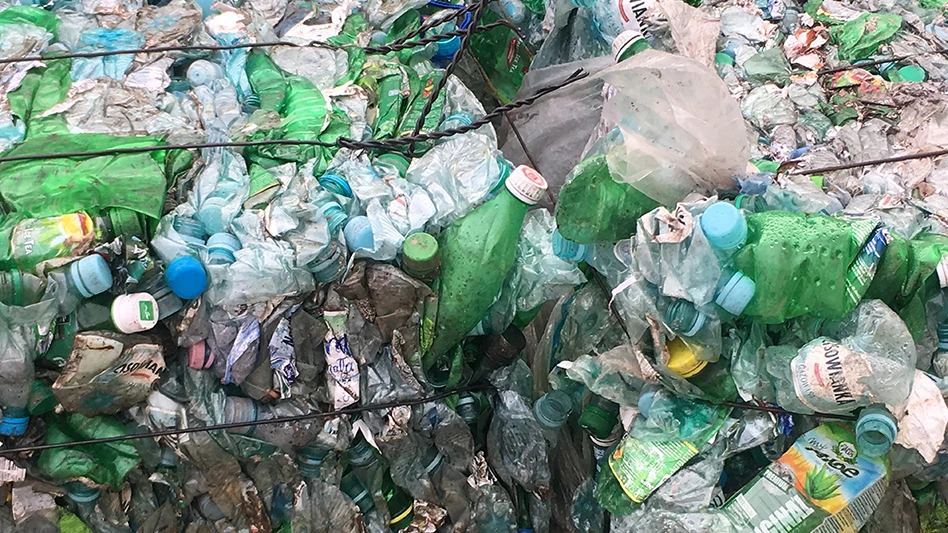
Recycling Today archives
An article co-authored by five McKinsey & Co. staff members in early September foresees a looming shortage of polyethylene terephthalate (PET) scrap necessary to help consumer packaged goods companies reach their recycled content targets.
The co-authors, all based in various United States offices of McKinsey, focus on PET bottle collection and projected recycled-content PET (rPET) when writing that brand owners “face the very real risk that they cannot achieve their goals because of an anticipated shortage of recycled materials.”
Based on figures and forecasts made by the McKinsey researchers, they add, “If brands with public recycled-content commitments follow through on their plans, the U.S. demand for rPET in 2030 would outpace supply by about three times.”
When it comes to closing that gap, the authors suggest packaging industry leaders could consider three meaningful ways to increase rPET availability.
Those recommendations include boosting supply via additional extended producer responsibility (EPR) funding and improved material recovery facility (MRF) sorting technology; for PET producers to follow the example of some paper and paperboard producers by having their own integrated recycling operations; and designing for recycling, possibly by settling on a unified color for all PET beverage bottles.
On the supply side, the McKinsey co-authors conclude, “With more than 80 percent of PET [scrap] going unused, opportunities exist across the value chain to boost PET recovery, from collection through to sorting and processing.”
The consulting firm points to The Recycling Partnership, Washington, when saying, “Given that recycling programs are often organized at the local level, there are opportunities to form public‒private partnerships to increase local collection rates in areas with underfunded or nonexistent curbside recycling.”
McKinsey summarizes the current supply situation by writing, “Today, only about 27 percent of PET bottles and some 18 percent of all recyclable PET plastic [scrap is] collected, with the remainder going to landfills. Over the past few years, there has been no step-change increase in PET collection or sorting. As a consequence, rPET supply has only grown at approximately 1 percent per annum over the 2012 to 2022 period in North America.”
While rPET consumers in the U.S. absorbed slightly more than 1.51 million pounds (755 tons) of recycled PET flake in 2020, by 2030 those same consuming sectors may require some 4.89 million pounds (2,490 tons) of the material, according to a McKinsey projection.
If brands stick to their recycled-content commitments and supply does not soon get a boost, the McKinsey researchers predict, “As the supply-and-demand imbalance widens, the price premium between rPET and virgin PET has the potential to rise significantly over the next decade.”
Latest from Recycling Today
- BMW Group, Encory launch 'direct recycling’ of batteries
- Loom Carbon, RTI International partner to scale textile recycling technology
- Goodwill Industries of West Michigan, American Glass Mosaics partner to divert glass from landfill
- CARI forms federal advocacy partnership
- Monthly packaging papers shipments down in November
- STEEL Act aims to enhance trade enforcement to prevent dumping of steel in the US
- San Francisco schools introduce compostable lunch trays
- Aduro graduates from Shell GameChanger program





